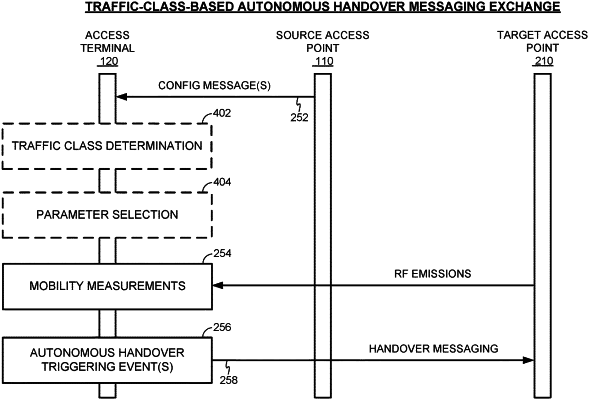| CPC H04W 36/32 (2013.01) [H04W 36/0061 (2013.01); H04W 36/00835 (2018.08); H04W 36/00837 (2018.08); H04W 36/30 (2013.01); H04W 36/36 (2013.01); H04W 36/24 (2013.01)] | 27 Claims |

|
1. A communication method, comprising:
receiving, at an access terminal while in a radio resource control (RRC) connected state with a source access point, one or more configuration messages configuring the access terminal for autonomous handover and including a parameter defining one or more autonomous handover triggering events, wherein the one or more autonomous handover triggering events comprise a signal strength trigger, and wherein the one or more configuration messages further indicate a reference signal measurement timing configuration (MTC) window for measuring one or more synchronization signals transmitted by a target access point permitted for the autonomous handover;
performing, at the access terminal, one or more mobility measurements on a communication medium, wherein the performing comprises measuring, over the MTC window, one or more signal strengths of the one or more synchronization signals;
monitoring, at the access terminal, for the one or more autonomous handover triggering events based on the one or more mobility measurements, wherein the monitoring comprises:
calculating a signal strength associated with the target access point based on the one or more signal strengths measured over the reference signal MTC window; and
determining whether the signal strength associated with the target access point satisfies a signal strength threshold; and
performing, at the access terminal, an autonomous handover from the source access point to the target access point based on the monitoring, wherein the autonomous handover is performed at least in response to a determination that the signal strength associated with the target access point satisfies the signal strength threshold, and wherein the access terminal does not monitor for further commands from the source access point after the autonomous handover is triggered.
|